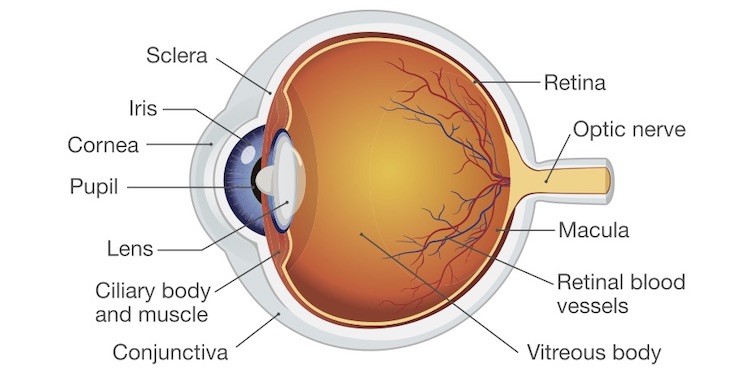The eye is a complex organ that works rather like a camera, focusing light rays to form an image.
On the surface of the eye is the cornea, a thin, clear layer of tissue that provides a window for light to pass through. In a healthy eye, the cornea bends or refracts light rays so they focus precisely on the retina in the back of the eye.
Beneath the cornea is the iris (the colored part of the eye we refer to when we say a person has brown or blue eyes).
In the center of the iris is the pupil, the opening at the center of the iris. The iris functions like a shutter, adjusting pupil size to control the amount of light entering the eye.

Located behind the iris is the lens, which works together with the cornea and vitreous to focus light. Like the lens in a camera, the eye’s lens adjusts light rays as vision shifts between nearby and distant objects in a process called accommodation. Light passes through the vitreous, a clear gelatinous substance that fills most of the eye and gives it its shape.
The back of the eye is lined with a thin layer of tissue that contains millions of photoreceptors, or light-sensitive cells. This is the retina, where light rays are converted into electrical signals that travel through the optic nerve to the brain. In the center of the retina is the macula. Less one quarter of an inch in diameter, the macula is responsible for clear central vision.
Contact CVP Physicians Dayton
At CVP Physicians Dayton, our highly experienced team of doctors specialize in providing the most advanced treatments available to benefit the health, function, and appearance of patients’ eyes. Please contact us today to schedule your appointment.




